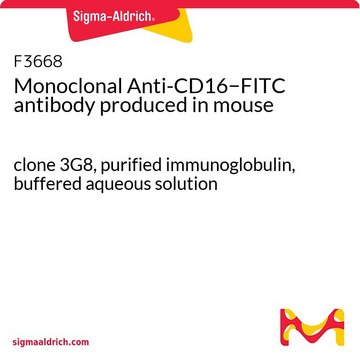1.15500
Acétonitrile
≥90% (HPLC), for preparative purposes, synthesis, cleaning, extraction and analytical purposes, EMPLURA®
Synonyme(s) :
ACN, Cyanométhane, Cyanure de méthyle, Éthylnitrile
About This Item
Produits recommandés
Nom du produit
Acétonitrile, for preparative purposes, for extraction, EMPLURA®
Qualité
for extraction
for synthesis
synthesis grade
Niveau de qualité
100
200
Densité de vapeur
1.41 (vs air)
Pression de vapeur
72.8 mmHg ( 20 °C)
97 hPa ( 20 °C)
Description
for analytical purposes
Gamme de produits
EMPLURA®
Essai
≥90% (HPLC)
Forme
liquid
Température d'inflammation spontanée
524 °C
973 °F
Limite d'explosivité
16 %
Fabricant/nom de marque
Calbiochem®
dilution
(low-cost alternative, for basic applications)
Impuretés
≤0.00016 meq/g Acidity
≤0.5% Water
Résidus d'évap.
≤0.005%
Indice de réfraction
n20/D 1.344 (lit.)
pb
81-82 °C (lit.)
Pf
−45 °C (lit.)
Température de transition
flash point 2 °C
Densité
0.786 g/mL at 25 °C (lit.)
Application(s)
environmental
food and beverages
industrial qc
pharmaceutical
Format
neat
Conditions d'expédition
ambient
Température de stockage
−20°C
Chaîne SMILES
CC#N
InChI
1S/C2H3N/c1-2-3/h1H3
Clé InChI
WEVYAHXRMPXWCK-UHFFFAOYSA-N
Vous recherchez des produits similaires ? Visite Guide de comparaison des produits
Description générale
Application
- Electroanalysis and Spectroelectrochemistry: Acetonitrile is widely used in electroanalysis and spectroelectrochemistry due to its excellent solvent properties and compatibility with a variety of electrodes. Recent research has demonstrated its use in the electroanalysis of nonaromatic explosives in the presence of dissolved oxygen. This application enhances the sensitivity and accuracy of detecting explosive compounds, which is critical for environmental monitoring and safety assessments (Holubowitch et al., Analytical Chemistry, 2020).
- Chromatographic Separation of Anthocyanins: Acetonitrile is a preferred solvent in high-performance liquid chromatography (HPLC) for the separation of anthocyanins and other phenolic compounds. Studies have explored the selectivity control of anthocyanin separation by replacing acetonitrile with methanol in the mobile phase, highlighting the solvent′s role in optimizing chromatographic conditions for improved resolution and detection sensitivity (Deineka et al., Journal of Analytical Chemistry, 2021).
- Peroxyoxalate Chemiluminescence Detection: Acetonitrile is used in peroxyoxalate chemiluminescence for the detection of α-amino acids. The solvent′s ability to form stable mixed solutions with water and ethyl acetate enhances the chemiluminescence reaction, allowing for sensitive and selective detection of amino acids in various samples. This application is essential for biochemical and clinical analyses (Kan et al., American Journal of Analytical Chemistry, 2020).
- Electrochemical Detection of DNA Modifications: Acetonitrile is utilized in electrochemical methods for detecting DNA modifications, such as 5-formyluracil. The solvent′s role in stabilizing the (2-benzimidazolyl) acetonitrile labeling reaction enhances the selectivity and sensitivity of detecting DNA modifications, which is crucial for genomic and biomedical research (Tang et al., Analytical Chemistry, 2021).
- Alternative Solvent in Chromatography: Research has investigated replacing acetonitrile with ethanol in reversed-phase HPLC for determining anthocyanins. This substitution aims to maintain chromatographic performance while reducing the environmental impact and costs associated with acetonitrile use. The findings demonstrate the feasibility of using ethanol as a greener alternative without compromising analytical quality (Deineka et al., Journal of Analytical Chemistry, 2023).
Avertissement
Remarque sur l'analyse
Identity (IR): conforms
Acidity: ≤ 0.00016 meq/g
Density (d 20 °C/ 4 °C): 0.782 - 0.783
Evaporation residue: ≤ 0.005 %
Water: ≤ 0.5 %
Informations légales
Mention d'avertissement
Danger
Mentions de danger
Classification des risques
Acute Tox. 4 Dermal - Acute Tox. 4 Inhalation - Acute Tox. 4 Oral - Eye Irrit. 2 - Flam. Liq. 2
Code de la classe de stockage
3 - Flammable liquids
Classe de danger pour l'eau (WGK)
WGK 2
Point d'éclair (°C)
2.0 °C - closed cup
Certificats d'analyse (COA)
Recherchez un Certificats d'analyse (COA) en saisissant le numéro de lot du produit. Les numéros de lot figurent sur l'étiquette du produit après les mots "Lot" ou "Batch".
Déjà en possession de ce produit ?
Retrouvez la documentation relative aux produits que vous avez récemment achetés dans la Bibliothèque de documents.
Les clients ont également consulté
Notre équipe de scientifiques dispose d'une expérience dans tous les secteurs de la recherche, notamment en sciences de la vie, science des matériaux, synthèse chimique, chromatographie, analyse et dans de nombreux autres domaines..
Contacter notre Service technique


